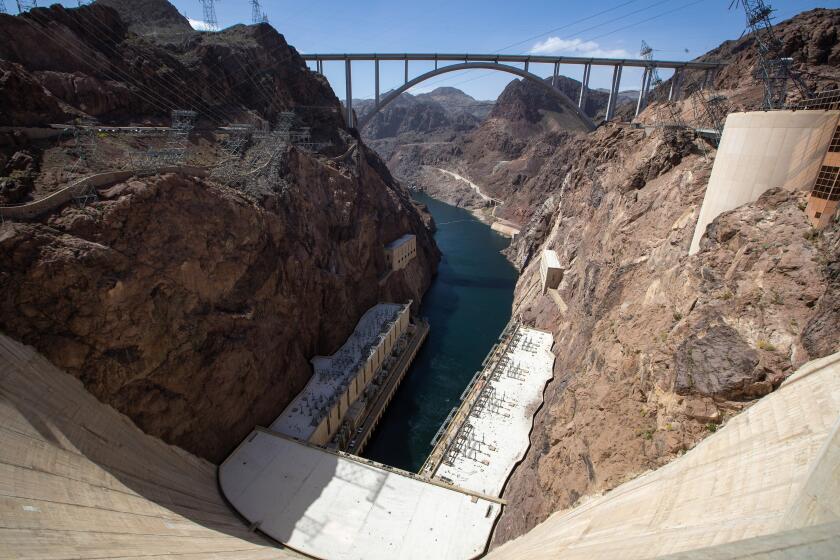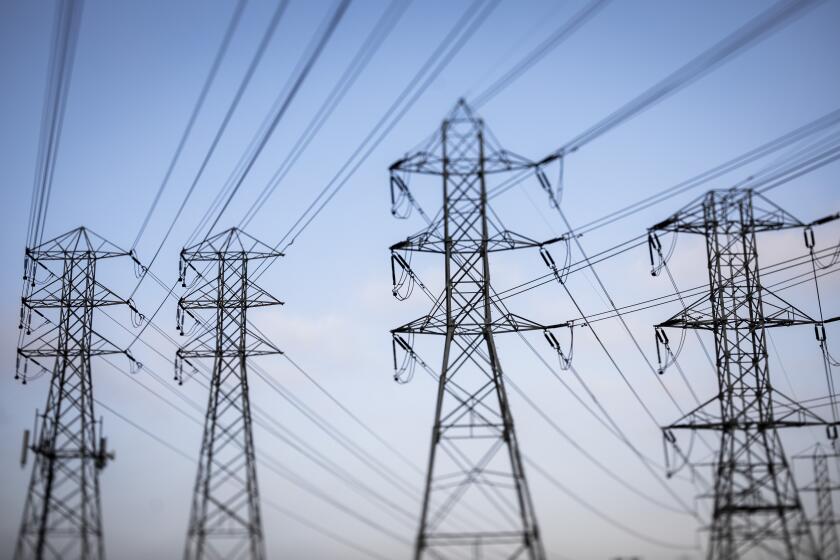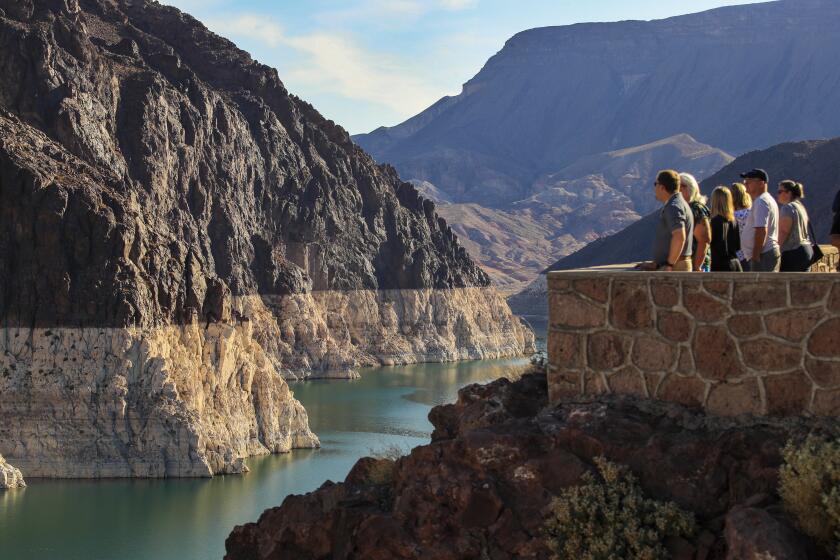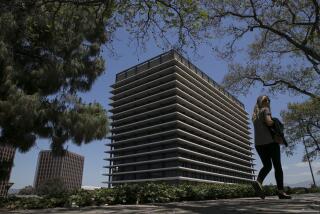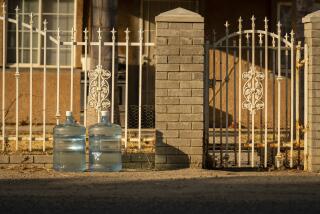Editorial: Even with the coming tax and rate hikes, water in SoCal is pretty cheap
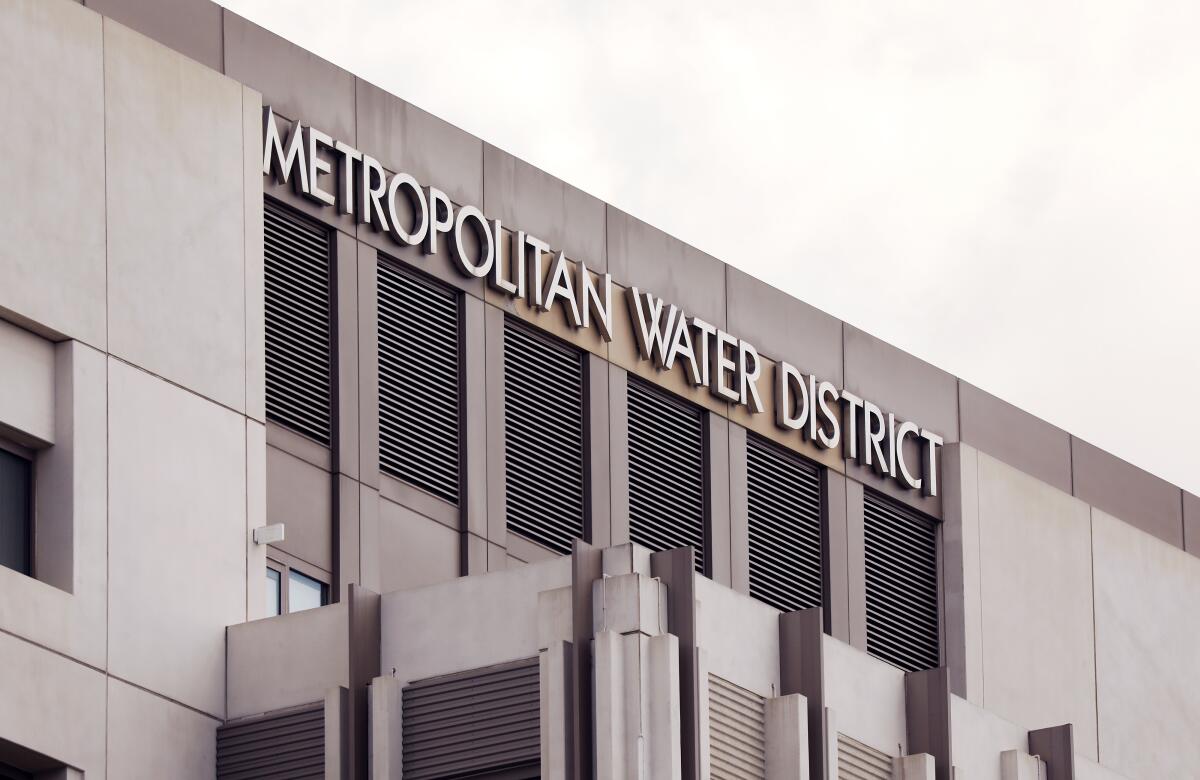
Itâs the most frustrating part of conservation. To save water, you rip out your lawn, shorten your shower time, collect rainwater for the flowers and stop washing the car. Your water use plummets.
And for all that trouble, your water supplier raises your rates. Why? Because everyone is using so much less that the agency is losing money.
The Metropolitan Water District, which delivers imported water to Southern California, is raising rates and property taxes to cover rising costs.
Thatâs the dynamic in play with Southern Californiaâs massive wholesaler, the Metropolitan Water District, despite full reservoirs after two of historyâs wettest winters. The Met, as it is known, acquires and stores water to sell to 12 districts and 14 cities that serve about 19 million people in Southern California.
It has one additional revenue hammer that its member agencies, which resell the water to consumers, lack: It can raise property taxes without getting approval from voters.
Californiaâs rising power rates are an obstacle to climate action. Regulators need to modernize the way utilities bill their customers to encourage electrification.
Under a budget adopted April 6 by the Metâs board, both taxes and rates will go up next year.
The rates charged to water agencies and cities will rise by 8.5% in 2025 and another 8.5% in 2026. Ratepayers in cities such as Los Angeles that have their own water supplies may not notice, because they will need relatively little Met water after the wet winter. Compton and other cities that buy no Met water wonât be affected by the rate increase. Beverly Hills and other cities that get almost all their water from Met will be affected right away.
But all property owners in the Metâs six-county area will see a tax hike, although it will amount to well less than $100 a year for most.
An unusually wet winter and federal largesse helped create a short-term Colorado River accord and gave California time to prepare for the hammer drop in 2026.
Should water users be happy about these increases? The answer is a counterintuitive âyes.â Costs would be higher and water scarcer in the future without modest hikes now.
Southern Californiaâs water rates and taxes are byproducts of the 20th century, an era with vastly different climate and economic conditions from today. When the Met was created in the 1920s to bring Colorado River water to Los Angeles, Orange and four other counties, California was abnormally wet, although no one knew it at the time. They still didnât know it decades later, when the State Water Project was built to ship Northern California water south.
Seemingly endless population and economic growth led to the expectation that water costs could be covered by future generations, which would be ever larger and thirstier, with more end-users paying water bills.
The crucial April snow survey conducted Tuesday morning showed above-average Sierra snowpack. That is not a surprise, but it is a relief.
Those days are over. Even with periodic wet winters, the customer base has stabilized, while the supply has become less predictable. Climate change and severe multiyear droughts make matters worse. We need to build new facilities to capture stormwater and recycle wastewater. Simultaneously, the old pumps, pipes, transformers and other equipment are aging and need to be replaced. These capital projects represent fixed costs that donât diminish as water use and revenue decline.
If these costs are not covered, Met will have to import more water from elsewhere, at even higher costs, or tap ever-scarcer (and therefore more expensive) water from existing sources. So the choice is not whether to pay more. The choice is whether whatever higher rates and taxes we pay will cover a consistently reliable supply or an increasingly sporadic and unpredictable supply. Reliability, obviously, is the better option.
Californiaâs water supply has become too low to continue irrigating extremely thirsty landscaping at malls, office parks and other places that exist only for looks, not for recreation or other use.
The remaining decision was how to divide up the increase between rates and property taxes. Met board members from the city of Los Angeles opposed the formula on the grounds that higher property taxes will increase housing costs. But housing simply wonât be sustainable for renters if water costs are piled onto rates. This is a fairer structure because it shares the burden between renters and property owners.
In addition to increasing costs for housing and water, regulators are trying to balance the burden of electric bills as the state urges Californians to adopt electric appliances and vehicles. The Public Utilities Commission has proposed a formula for electricity thatâs somewhat similar to the Metâs increases for water: part fixed cost, part rate increase. The idea is to encourage careful use of resources without letting anyone carry an unfair portion of the burden.
Over the decades, Southern Californiaâs residents may have come to think of cheap water as a birthright. But it will take additional investments to keep the water flowing. Even with higher costs passed down to consumers, water in this increasingly arid region remains a bargain.
More to Read
A cure for the common opinion
Get thought-provoking perspectives with our weekly newsletter.
You may occasionally receive promotional content from the Los Angeles Times.
